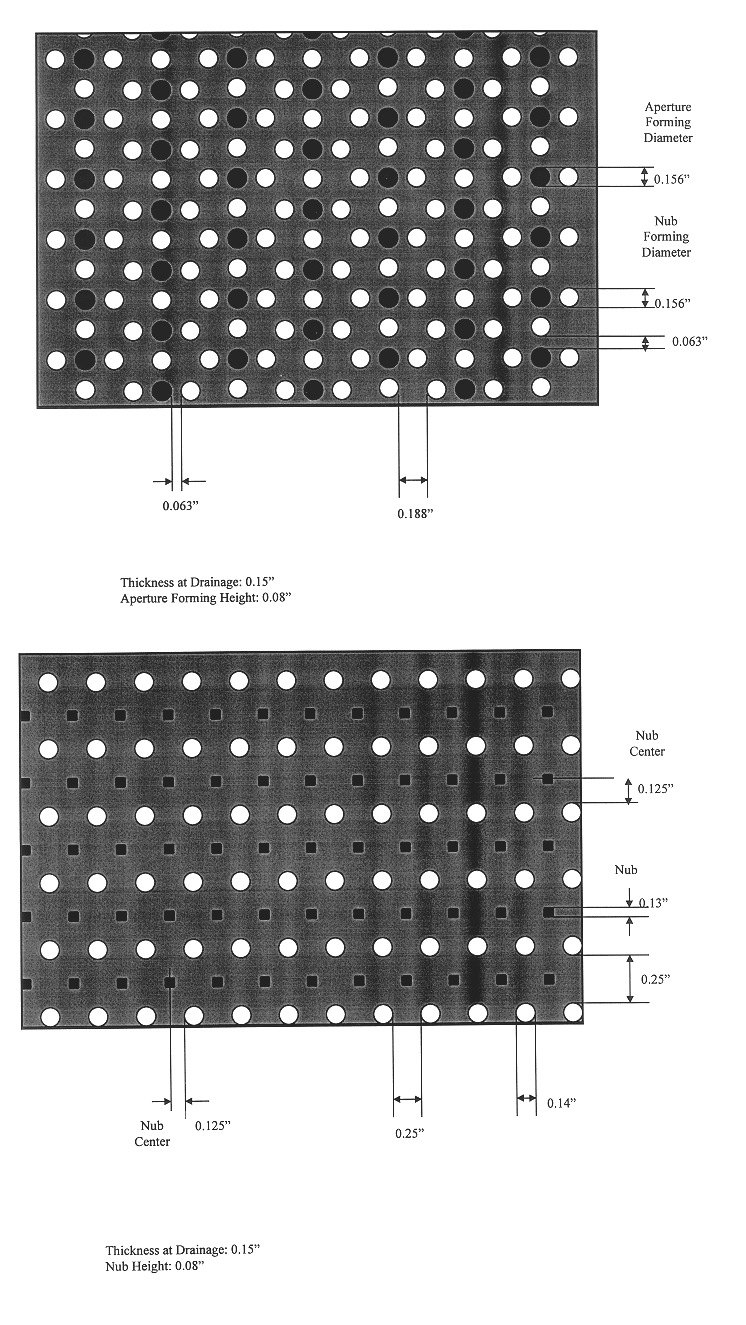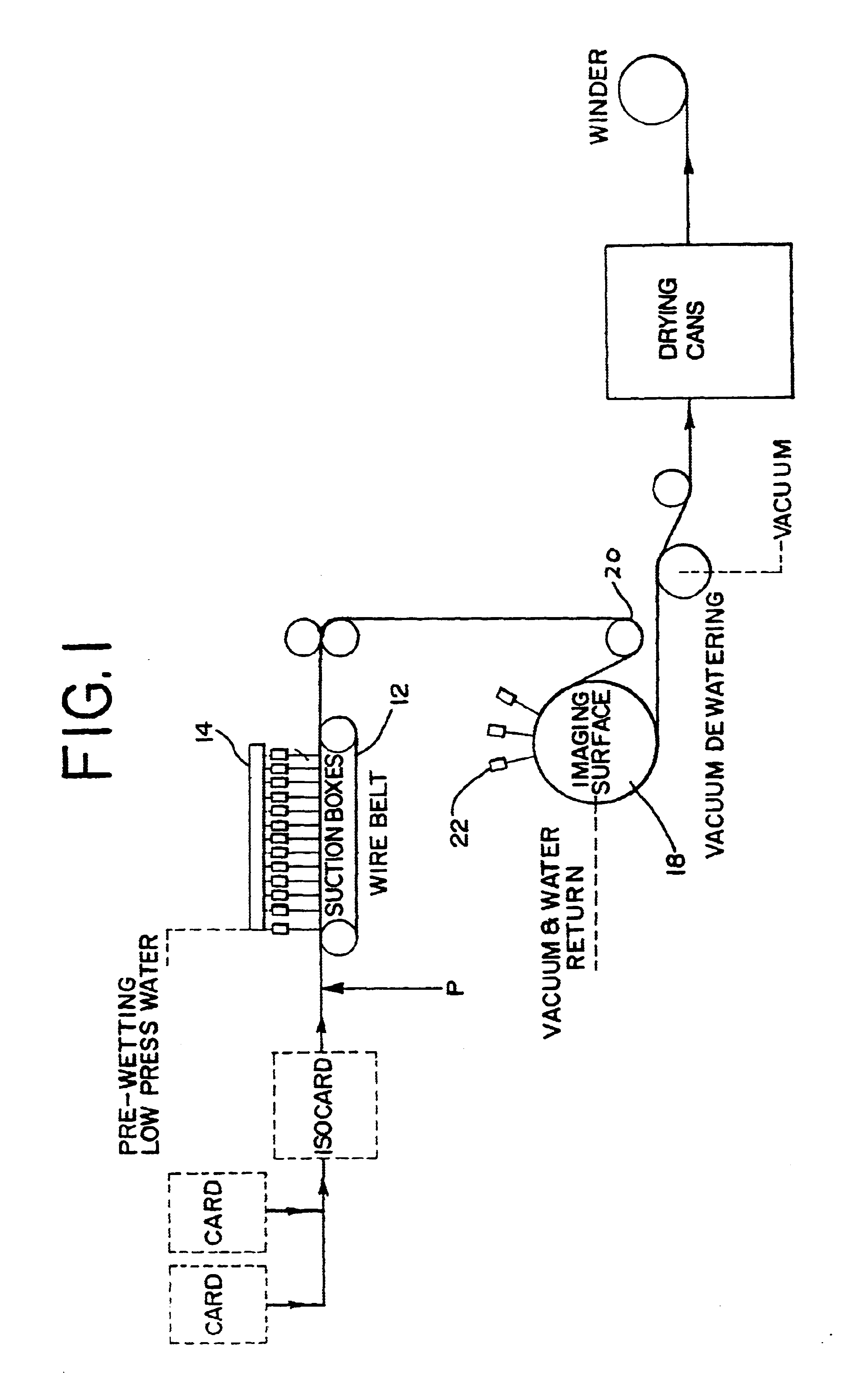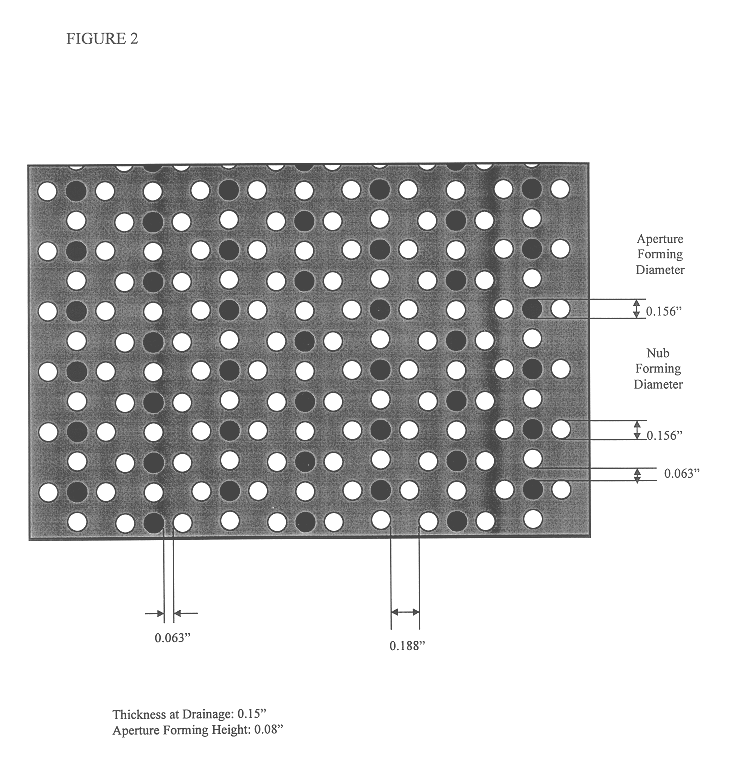Imaged nonwoven fabric for imparting an improved aesthetic texture to surfaces
a non-woven fabric and image technology, applied in the field of three-dimensional imaged non-woven fabrics, can solve the problems of affecting the aesthetic quality, affecting the appearance quality, and affecting the quality of the finished product,
- Summary
- Abstract
- Description
- Claims
- Application Information
AI Technical Summary
Benefits of technology
Problems solved by technology
Method used
Image
Examples
example 1
Using a forming apparatus of the type illustrated in FIG. 1, a nonwoven fabric was made in accordance with the present invention by providing a precursor web comprising 100 percent by weight polyester fibers as supplied by Wellman as Type T-472 PET, 1.2 dpf by 1.5 inch staple length. The precursor fibrous batt was entangled by a series of entangling manifolds such as diagrammatically illustrated in FIG. 1. FIG. 1 illustrates a hydroentangling apparatus for forming nonwoven fabrics in accordance with the present invention. The apparatus includes a foraminous forming surface in the form of belt 12 upon which the precursor fibrous batt P is positioned for pre-entangling by entangling manifold 14. In the present examples, the entangling manifold 14 included three orifice strips each including 120 micron orifices spaced at 42.3 per inch, with the orifice strips of the manifold successively operated at 100, 300, and 600 pounds per square inch, and with a line speed of 45 feet per minute. ...
example 2
An imaged nonwoven fabric was fabricated by the method specified in Example 1, where in the alternative, the precursor fibrous batt was comprised of viscose rayon as supplied by Lenzing at T-8191, 1.5 dpf by 1.5 inch staple length. Final weight of the dried prebond layer before layering of the PET fiber fibrous batt was 1.5 ounces per square yard.
example 3
An imaged nonwoven fabric was fabricated by the method specified in Example 1, where in the alternative, the precursor fibrous batt was comprised of 2.0 ounces per square yard PET fiber.
PUM
| Property | Measurement | Unit |
|---|---|---|
| staple length | aaaaa | aaaaa |
| staple length | aaaaa | aaaaa |
| lengths | aaaaa | aaaaa |
Abstract
Description
Claims
Application Information
 Login to View More
Login to View More - R&D
- Intellectual Property
- Life Sciences
- Materials
- Tech Scout
- Unparalleled Data Quality
- Higher Quality Content
- 60% Fewer Hallucinations
Browse by: Latest US Patents, China's latest patents, Technical Efficacy Thesaurus, Application Domain, Technology Topic, Popular Technical Reports.
© 2025 PatSnap. All rights reserved.Legal|Privacy policy|Modern Slavery Act Transparency Statement|Sitemap|About US| Contact US: help@patsnap.com



